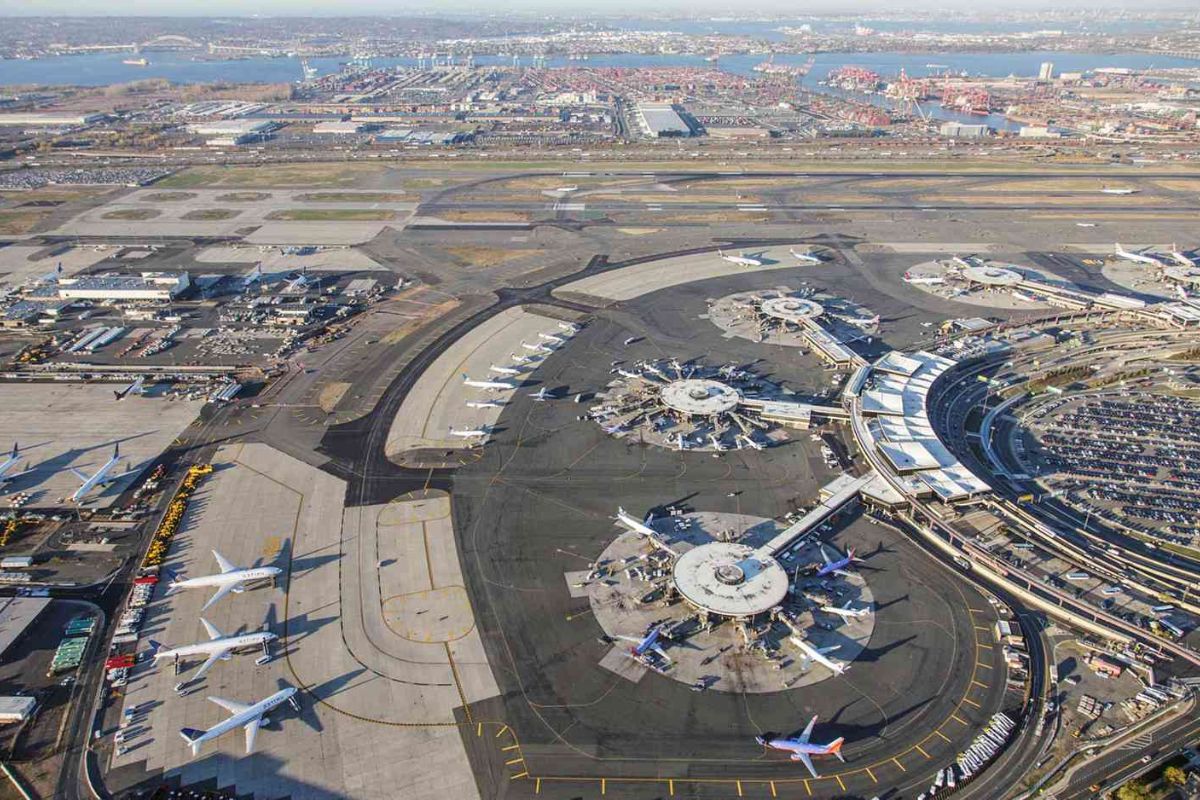
Newark Liberty International Airport is more than just a place to catch a flight. Opened in 1928, it holds the title of the oldest airfield in the United States. Located in New Jersey, it serves millions of passengers each year. Did you know it was the first major airport in the New York City area? Newark Airport has three terminals, each bustling with activity. From its early days as a mail and cargo hub to its current status as a major international gateway, this airport has a rich history. Whether you're a frequent flyer or just curious, these 20 facts will give you a new appreciation for Newark Liberty International Airport.
Newark Airport's History
Newark Liberty International Airport, often referred to as EWR, has a rich history. It has grown from a small airfield into one of the busiest airports in the United States.
- Newark Airport opened on October 1, 1928, making it the oldest airfield in the New York metropolitan area.
- During World War II, the airport was closed to passenger traffic and used by the U.S. Army for logistics and training.
- In 1935, Amelia Earhart dedicated the Newark Airport Administration Building, which was the first commercial airline terminal in North America.
Modern-Day Operations
Today, Newark Airport is a major hub for both domestic and international flights. It serves millions of passengers each year and continues to expand its services.
- Newark Airport handled over 46 million passengers in 2019, making it one of the busiest airports in the United States.
- The airport has three terminals: A, B, and C. Terminal C is exclusively operated by United Airlines.
- Newark is a major hub for United Airlines, which operates more than 70% of the flights at the airport.
Unique Features
Newark Airport has several unique features that set it apart from other airports. These features enhance the travel experience for passengers.
- The airport offers a free monorail service called AirTrain, which connects all terminals, parking lots, and the NJ Transit and Amtrak train stations.
- Newark Airport was the first airport in the United States to have a control tower, which was built in 1935.
- The airport has a unique art program that features rotating exhibits and permanent installations throughout the terminals.
Environmental Initiatives
Newark Airport is committed to sustainability and has implemented several environmental initiatives to reduce its carbon footprint.
- The airport has installed solar panels on the roofs of several buildings, generating renewable energy to power its operations.
- Newark Airport has a comprehensive recycling program that includes the collection of paper, plastic, glass, and metal.
- The airport has implemented water-saving measures, such as low-flow faucets and toilets, to reduce water consumption.
Passenger Amenities
Newark Airport offers a wide range of amenities to make the travel experience more comfortable and enjoyable for passengers.
- The airport has numerous dining options, including fast food, casual dining, and fine dining restaurants.
- Newark Airport offers free Wi-Fi throughout all terminals, allowing passengers to stay connected while waiting for their flights.
- The airport has several lounges, including United Club and American Express Centurion Lounge, where passengers can relax and enjoy complimentary refreshments.
Transportation and Accessibility
Getting to and from Newark Airport is convenient, thanks to its excellent transportation options and accessibility features.
- The airport is easily accessible by car, with several parking options available, including short-term, long-term, and valet parking.
- Newark Airport is connected to New York City and other parts of New Jersey by NJ Transit and Amtrak trains, making it easy for passengers to reach their destinations.
- The airport offers a variety of ground transportation options, including taxis, ride-sharing services, and shuttle buses.
Future Developments
Newark Airport is continuously evolving to meet the needs of passengers and improve its facilities.
- The airport is currently undergoing a major redevelopment project, which includes the construction of a new Terminal A and improvements to roadways and parking facilities.
- Future plans for Newark Airport include the expansion of Terminal B and the addition of new gates and amenities to accommodate the growing number of passengers.
Newark Airport: A Hub of Surprises
Newark Airport isn't just a place to catch a flight. It's a treasure chest of fascinating facts. From its historic beginnings in 1928 to being one of the busiest airports in the U.S., Newark has seen it all. Did you know it was the first major airport in the New York metro area? Or that it has its own monorail system, AirTrain, connecting terminals and parking lots?
The airport's role in WWII, serving as a logistics hub, adds to its rich history. Today, it's a major gateway for international travel, with flights to over 160 destinations worldwide. The airport also boasts impressive sustainability efforts, like its solar power initiatives.
Next time you're at Newark, take a moment to appreciate its unique blend of history, innovation, and global connectivity. It's more than just an airport; it's a testament to progress and resilience.
Was this page helpful?
Our commitment to delivering trustworthy and engaging content is at the heart of what we do. Each fact on our site is contributed by real users like you, bringing a wealth of diverse insights and information. To ensure the highest standards of accuracy and reliability, our dedicated editors meticulously review each submission. This process guarantees that the facts we share are not only fascinating but also credible. Trust in our commitment to quality and authenticity as you explore and learn with us.
